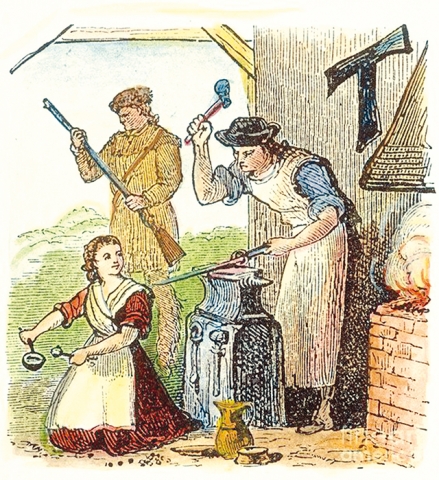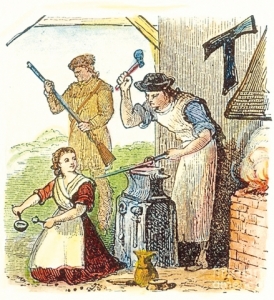History of Georgia’s Economy. Part IV
In the late 18th century, about 60 fields of craftsmanship production were being pursued in Tbilisi and the cities of Eastern Georgia. Craftsmen, along with traditional industries (blacksmithry, construction, textile, etc.), over time mastered new activities. For example, artisans from Tbilisi and other cities in the late 18th century were producing different parts of firearms. The artisans were united in various guilds, and from the beginning of the 18th century to the 1870-90s, the number of trade and craftsmanship shops increased from 200 to 500. There were also shops in other Georgian cities: Gori, Telavi, Sighnaghi, Dusheti, and Kutaisi among them.
In the late 18th century, manufacturing-type enterprises were established in Kartli-Kakheti, which was connected with the economic policy pursued by Erekle II. Since the Georgian kingdoms were significantly behind the European level in development, and progressive forms of production could not develop naturally, Erekle II resorted to forced economic development, which manifested itself in state control over the existing economic tools.
Simultaneous to the revival and patronage of trade, the royal government began to focus on the development of industry. As a result, from the 1770s, several state-owned manufacturing enterprises were established to employ hired laborers, with manufacturers producing a large number of products. During this period, the Akhtala silver and Alaverdi copper smelters were opened. Shamblugh and Damblughi copper smelters also began to operate. More than 2,000 people were employed in these factories and a large amount of silver and copper ore was mined.
At the same time, a "factory" for producing cannons, mortars and grenades was built in Tbilisi. Additionally, factories producing gunpowder, utensils, glass, salt, soap and more were opened, and the printing house was re-equipped. Most state-owned enterprises were leased to private individuals, which encouraged private trading capital to become industrial capital. This process became particularly noticeable in the textile industry. In general, Kartli-Kakheti produced more than 5.000,000 arshins (one arshin = approximately 101 centimeters) of fabric per year, most of which was made by private manufacturing companies. As a result of the development of the textile industry, the main dye-house of Tbilisi was expanded, which at that time was already a manufacturing enterprise. In addition to Kartli-Kakheti, fabrics made in Tbilisi and other cities in eastern Georgia were sold in western Georgia, neighboring khanates, the North Caucasus, and Russia.
Against the background of economic activity, trade capital expanded significantly, and the interest rate on loans decreased. Hired labor grew, both in the cities and in the countryside. The number of cases of peasants escaping serfdom also increased.
Thus, as a result of the creation of capitalist enterprises and the introduction of many other innovative approaches to the country's economic life, the kingdom developed economically, and at the same time, government revenues increased.
The growing economic development of the Kingdom of Kartli-Kakheti is reflected by the fact that in 1795, despite the destruction of Tbilisi by the Iranian ruler Agha Mohammad Khan, the country was able to quickly return to the old level of economic development.
Although the economic situation in western Georgia remained difficult, the country overcame the isolation from the Ottomans and significantly reduced the scale of the slave trade.
When assessing the economic situation of the Kingdom of Kartli-Kakheti in the discussed period, it should be noted that despite the economic development, the country was still far behind the western European countries, although the gradual establishment of capitalist elements was a precondition for finally overcoming feudalism. At the same time, it is unacceptable (as is seen in modern historiography) to assume that the economy of the Georgian state at the end of the 18th century exhausted all possibilities and was doomed to failure. Such assessments are untrue and are dictated by the willingness to justify the need for the abolition of the Georgian kingdoms by the Russian Empire in the early 19th century.
By Apolon Tabuashvili, Emil Avdaliani
Image source: fineartamerica.com











